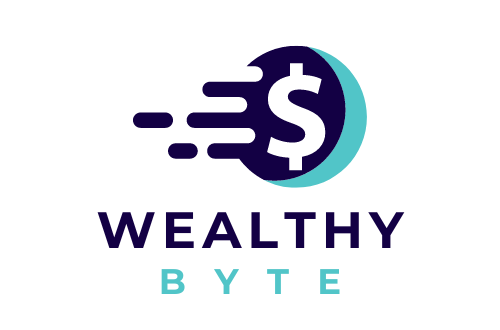
The shift from streaming to spinning isn’t just cultural — it’s economic. Over the past three years, millions of U.S. consumers have quietly traded passive entertainment for interactive wagering, replacing Netflix marathons with nights spent testing their luck on regulated online casino platforms. What looks like a lifestyle fad is actually a structural transformation in digital leisure economics — one driven by regulation, gamification, and the reallocation of discretionary income in a post-pandemic, inflation-aware economy.
While subscription fatigue hits the entertainment sector, iGaming platforms are experiencing a very different kind of retention story. The same analytics tools that once optimized binge-watching are now being used to personalize bonus offers, segment player bases, and measure lifetime value. In short: the entertainment business has become transactional, and the gambling industry has learned to make that transaction feel like play.
The New Attention Economy: When Interactivity Outperforms Passivity
The online casino sector has learned a hard lesson from Netflix’s churn problem: attention without engagement is a dead end. Streaming platforms deliver consumption; iGaming delivers participation. For a generation raised on dopamine loops, interactive value trumps passive content.
Recent data from Eilers & Krejcik Gaming shows that in regulated U.S. states, casino revenue growth continues to outpace sportsbook handle expansion. Michigan, Pennsylvania, and New Jersey have all reported steady month-over-month gains in iGaming GGR — even as traditional entertainment platforms see declining subscriber metrics. The reason isn’t hard to see: online casinos monetize engagement more efficiently than streaming services ever could. Each spin, hand, or wager represents not just time spent, but value exchanged.
That distinction matters for investors and policymakers alike. For entertainment giants, engagement is a marketing metric; for online operators, it’s a balance-sheet input. The more states legalize iGaming, the more that difference translates into taxable revenue — and into regulatory pressure to manage the social cost of accessibility.
Regulation Shapes the Market — and the Player Journey
This migration toward digital wagering isn’t occurring in a vacuum. It’s unfolding within the architecture of state-level regulation that defines the very shape of player behavior. Consider how licensing frameworks have normalized online gambling as a form of “entertainment commerce.” By requiring KYC verification, self-exclusion tools, and strict geolocation, regulators have converted what was once a gray-market indulgence into a mainstream, auditable industry.
In that sense, the story of the online casino surge is less about moral panic and more about administrative competence. States like New Jersey and Michigan have shown that a well-regulated market doesn’t just protect consumers — it attracts them. Transparency builds trust; trust drives volume; volume funds oversight. It’s a closed system that sustains itself when managed correctly.
That’s also why the most successful operators are those willing to align with regulatory rigor rather than skirt it. The rise of reputable, licensed platforms — for example, Slot, a fully regulated online casino that emphasizes responsible play, transparent RTP disclosures, and licensed operations — demonstrates how safety and enjoyment can coexist in a compliant framework. Players are discovering that regulated environments offer not just better odds, but peace of mind.
The Economics of Engagement: Where the Margins Live
The economics of this digital migration are surprisingly straightforward. Subscription entertainment captures recurring payments; online casinos capture variable engagement. The former is predictable but capped. The latter is volatile but scalable.
Affiliate marketing models reinforce this difference. While streaming affiliates chase one-time referral bounties, gambling affiliates operate on revenue-share or hybrid deals that align long-term value with player retention. This structure rewards sustainable engagement over shallow acquisition. It also explains why so much of the content economy has migrated from review-driven media to compliance-aware performance marketing.

Operators and affiliates who thrive in this space think less like bloggers and more like behavioral economists. They track metrics such as ARPU (average revenue per user), churn rate, and cross-vertical migration — the share of sportsbook players converting to casino products. It’s a numbers game informed as much by psychology as by law.
A Post-Pandemic Repricing of Risk and Reward
There’s a macroeconomic angle here that rarely makes headlines: inflation and discretionary income reallocation. As consumer budgets tighten, households are reassessing where entertainment fits within their monthly spend. The streaming stack — Netflix, Hulu, Disney+, and the rest — now looks like a fixed cost. By contrast, online casino play, though inherently riskier, offers the illusion of control and potential upside.
This “risk rationalization” is a defining feature of modern entertainment economics. It’s not that players believe they’ll win more often; it’s that the act of wagering feels like participation in a system that rewards skill, luck, and timing — three variables no algorithmic content library can replicate. That perception, amplified by targeted promotions and localized advertising, is why the digital casino has replaced the couch as a site of weekend recreation.
The Affiliate Layer: Where Media Meets Compliance
If streaming platforms are judged by watch time, gambling affiliates are judged by retention curves. Yet, the affiliate landscape is in flux. The days of SEO-first casino blogs pushing unlicensed operators are waning as regulators tighten disclosure requirements and enforce responsible marketing standards. The Federal Trade Commission’s 2023 affiliate guidance, which expanded disclosure expectations for financial and gaming promotions, marked a turning point.
For affiliates, the future lies in credibility. Transparency isn’t a compliance burden; it’s a competitive edge. Operators are increasingly demanding clean traffic sources, verified player quality, and post-registration engagement data. Those who can deliver it will define the next generation of affiliate media — part journalist, part analyst, and part compliance consultant.
The Policy Horizon: Fragmented Regulation, Unified Demand
Despite its momentum, the U.S. iGaming market remains a patchwork of regulatory silos. Each state’s licensing regime, tax rate, and advertising code creates friction for national operators. Yet, consumer demand is national, not local. That’s why multi-jurisdictional networks — such as shared poker liquidity pools and cross-state marketing partnerships — are gaining traction.
The policy debate is shifting from moral opposition to fiscal optimization. States that have legalized online casinos are collecting substantial tax revenue while simultaneously tightening responsible gambling frameworks. Those still on the sidelines, like New York or Illinois, are watching the data from Michigan and Pennsylvania closely. Once fiscal pragmatism outweighs political hesitation, the domino effect will accelerate.
But with growth comes responsibility. Regulators are under pressure to ensure that this “digital rush” doesn’t erode player protections. The smart operators are already anticipating this — integrating behavioral risk analytics, funding problem gambling research, and aligning their public narratives with consumer well-being. The short-term costs of compliance are minor compared to the long-term reputational benefits of operating within trust-based ecosystems.
From Passive Viewers to Active Participants
At the cultural level, this migration marks a turning point in how Americans define leisure. The same technology that made content on demand now makes gaming on demand — legal, accessible, and increasingly normalized. The digital casino isn’t replacing television; it’s replacing boredom.
That shift raises deeper questions about attention economics and the role of regulation as both safeguard and market enabler. The sustainable future of iGaming will depend not on hype, but on how well the industry balances innovation with integrity.
While player volume is rising, revenue per user tells a more nuanced story. The winners in this new landscape won’t be those who chase traffic, but those who build trust — platforms that make entertainment feel participatory, transparent, and responsibly thrilling. In other words, the house still has an edge, but in regulated markets, so does the player.
The digital rush isn’t about escape; it’s about engagement. And in the long view, that may be the most telling sign that online casinos have evolved from fringe pastime to mainstream industry — not because they promise easy money, but because they deliver structured play in a world where structure itself has become the rarest prize.















